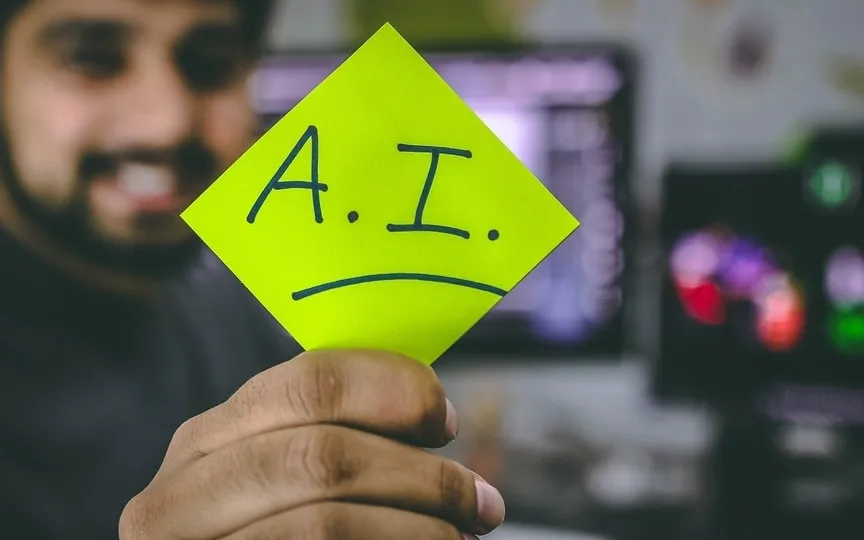AI’s focus on UK vandals, Nvidia’s potential rise to the top fueled by AI, and more: 5 AI updates you might have overlooked today.
As Christmas Eve approaches, celebrations are underway worldwide, but intriguing developments in the field of artificial intelligence continue to unfold. In the United Kingdom, Historic England, an executive non-departmental public body, is utilizing AI to combat the defacement of historic churches, castles, and monasteries by graffiti artists. Additionally, reports suggest that a significant layoff at Google could result in the loss of employment for up to 30,000 individuals. These stories and more are featured in today’s AI roundup, inviting us to delve deeper into the details.
Artificial intelligence helps fight vandals
Artificial intelligence can be used as a deterrent against graffiti vandalism targeting historic sites such as churches and castles, reports the Guardian. Historic England is launching a ground-breaking project using artificial intelligence to identify vandals using their tags, track their movements by comparing graffiti in different locations and analyze paint to trace the origin of spray cans. This AI technology can also be used to identify lead stolen from church roofs, providing a valuable tool for law enforcement and scrap dealers that can be accessed through a smartphone app.
Mark Harrison, head of heritage crime strategy at Historic England, told the Guardian: “Go to Google Play or the App Store and you’ll get apps that identify plants, trees and rocks. It’s exactly the same process… To the human eye, graffiti might look the same, but to a machine it can be quite distinctly different… Working with the manufacturers, we might be able to get it down—using AI imaging—to tell us what brand of paint it is. Working with the retailers, we can see if we can reduce the source.”
According to the report, Google is planning 30,000 layoffs
According to a report by Live Mint, which cited The Information, as many as 30,000 workers may soon be out of a job at Google as the company’s AI innovation has led to a surplus of jobs. many jobs in Google’s advertising sales department are redundant Google introduced a new AI tool called Performance Max. It can provide suggestions and create ads for its customers that can perform well. These ads do not require human intervention and can run completely independently.
Nvidia closes in as revenue leader in semiconductors due to AI boom
Nikkei Asia reports that Nvidia is poised to emerge as the new revenue leader in the semiconductor industry, breaking a three-decade hold on Intel and Samsung Electronics. With a high market share in graphics processing units (GPUs), crucial for artificial intelligence, Nvidia is expected to reach $58.8 billion in revenue in the fiscal year ending January 2024, double the previous year. That beats Samsung Electronics’ expected revenue of about $49 billion, down 34%, and Intel’s forecast revenue of $53.9 billion, down 14%.
Artificial intelligence can tell children bedtime stories
According to a report by Wired, parents are craving more episodes of animated shows to show their kids after bedtime stories have taken matters into their own hands. A London-based developer named Luke Warner created a story generator called Bluey-GPT (based on the Australian preschool TV series of the same name) using OpenAI’s customizable GPT bots. This AI tool starts each session by asking for personal information such as name, age and date, then creates personalized stories about Bluey and his sibling Bingo. The goal is to offer young viewers a more interesting and customized experience.
The artist uses digital tools to prevent artificial intelligence from copying their style
Artists facing challenges from having their style copied without credit or compensation have teamed up with university researchers to combat such copying activity, reports AFP. American illustrator Paloma McClain discovered that her art was being used to train AI models without credit, using the free Glaze software developed by researchers at the University of Chicago. Glaze disrupts AI training by making subtle pixel adjustments that lead to significant differences in digitized art, making AI models smarter. Glaze, originally designed to disrupt facial recognition systems, was created in four months.
“We’re basically providing technical tools to help protect human creators from invasive and abusive AI models,” said computer science professor Ben Zhao of the Glaze team.




